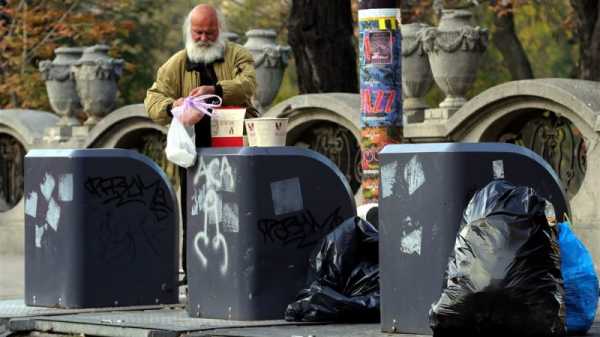
In Serbia, as in EU countries, poverty is discussed from the aspect of risk, which is 21.2%, according to the latest available data. EURACTIV explores what it means to be poor in Serbia.
A fifth of the population has a monthly income below the poverty threshold, which, according to available data from 2021, amounted to 24,064 dinars, or a little over €200. The group’s most vulnerable are the young and those over 65.
“A fifth of the population cannot reach basic life needs. In 2021, the minimum consumer basket amounted to an average of 39,622 dinars. However, the method of measuring income poverty does not include the availability of healthcare, education, and several other services in society,” Professor Natalija Perišić, at the Faculty of Political Sciences in Belgrade, told EURACTIV.
Perišić explains that the right to social assistance (NSP), which those who do not have sufficient means of living are eligible for in theory, has been implemented in Serbia for decades. However, it is necessary to fulfil stringent conditions, which is indicated by the fact that the coverage of the population of NSP is 2.9%.
According to the National Employment Service data, at the end of February this year, 429,351 unemployed persons were registered.
“In the last ten years, the number of unemployed has been continuously decreasing,” the Ministry of Labour, Employment, Social Affairs and Veteran Affairs told EURACTIV.
Perišić agrees that employment is the best way to fight poverty, which does not mean that employees are not poor.
In the Centers for Social Work, several social services have been developed, especially psycho-social assistance.
The Red Cross coordinates the work of soup kitchens in 77 cities and municipalities in Serbia, and 32,492 meals are prepared and distributed daily.
“From the funds provided in the republican budget, the Red Cross strives to distribute 50,500 servings of aid in the form of family food and hygiene packages to the most vulnerable citizens. Around 125,000 individuals in almost 3,000 populated places receive this help,” the Red Cross explains.
The needs of the most vulnerable relate to food, hygiene products, shoes and clothes.
(EURACTIV.rs | Milena Antonijević)
Source: euractiv.com



